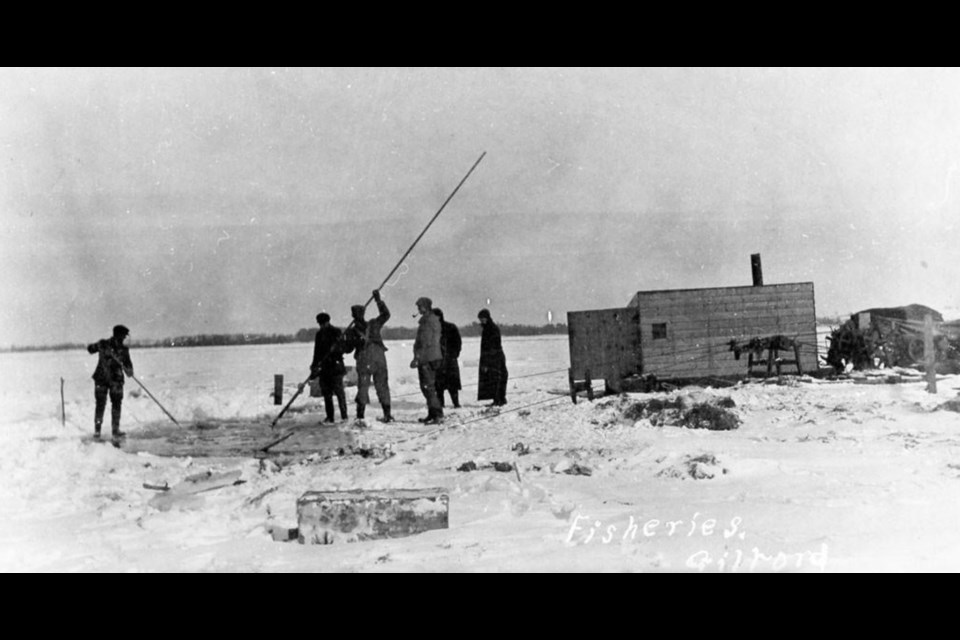You may know Lake Simcoe as an ice-fishing mecca, but do you know it also had a thriving commercial fishery during the winter months?
For 50 years, fishing for carp under the thick sheet of ice covering the lake was an important part of the economy in Gilford.
Carp is not native to Lake Simcoe. An invasive species, it was introduced into the lake in the 1890s and its numbers exploded. Carp thrived in Cooks Bay, whose shallow water was thick with wild rice on which the fish fed.
It wasn’t long before someone realized these fish represented the potential for economic gain as there was great demand for carp among Jewish residents in Toronto and New York City. Bradford resident Jack Spencer formed the Bradford Fish Company in the early years of the 20th century.
Harvesting carp was a labour-intensive job. Holes would be chopped into the ice in a straight line, every 30 feet, stretching 600 feet into the lake from the end of Gilford Road. A huge net was placed under the ice. On the top of the net were cork floats. Since carp are bottom feeders, lead weights were attached to the net’s bottom so it would sweep the bottom of the bay. A pulley would drag the net to the mouth of the Holland River.
Because Jewish tradition says fish had to be killed by a rabbi, stock destined for Jewish clientele had to be shipped fresh. Captured fish were kept fresh in large wooden crates sunk into the river. They were later shipped to market in water tanks aboard rail cars.
The gentile market required the fish to be shipped live, so a portion of the catch was simply packed in ice for shipment in crates.
The Bradford Fish Company had a pair of work camps. One was located at the end of Gilford Road. This included an icehouse where workers stored the ice they harvested from the lake for packing fish, a kitchen and bunkhouse, a boathouse, and a warehouse for storing nets and other tools. Another camp, with kitchen and bunkhouse, was located alongside the Holland River.
As the lakeshore of Cooks Bay became developed, most of the wild rice disappeared and the carp population plummeted, ending the era of the commercial carp fishery in Lake Simcoe.



